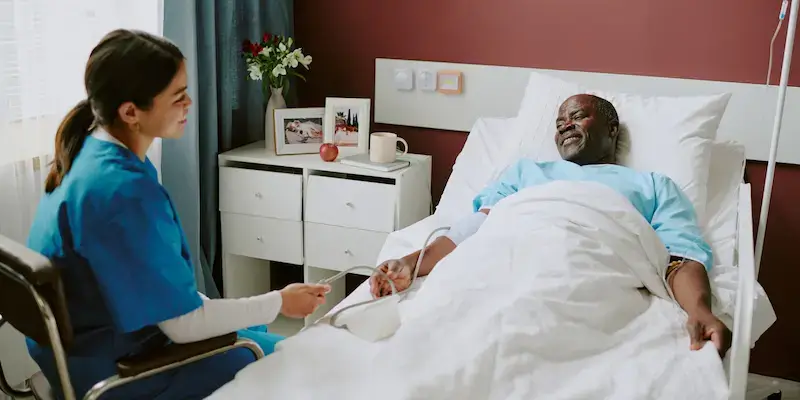Home >
Dupuytren’s disease
Get rapid access to our leading specialists.
Dupuytren’s disease, also known as Dupuytren’s contracture, is a condition where a finger or fingers (most often on the little finger side of the hand ) become difficult to straighten and start to bend inwards to the palm. There is no cure for Dupuytren’s disease, but surgery can help correct the affected digits.
What is Dupuytren’s disease?
Dupuytren’s disease occurs when protein-filled lumps (nodules) begin to appear on your palms, which can sometimes create a thick cord that pulls taut underneath the skin and makes it difficult, and sometimes impossible, to straighten the finger(s).
What are the symptoms of Dupuytren’s disease?
The progression of Dupuytren’s disease is gradual, and most often occurs slowly over months and years. At first, nodules begin to form on the palm of your hand and the skin may begin to dimple. These lumps may be painful or uncomfortable, but this usually wears off over time. Eventually, a cordlike band of tissue forms underneath the skin of the palm, which causes the fingers to bend inwards and sometimes it becomes extremely difficult (or even impossible) to straighten your finger(s).
What causes Dupuytren’s disease?
It is not known what causes Dupuytren’s disease, but it is thought that it can be related to:
- smoking
- family history
- diabetes
- epilepsy
- injury to the hand or wrist (occasionally)
How is Dupuytren’s disease diagnosed?
Generally, your consultant will be able to identify whether you have Dupuytren’s disease through sight and touch.
They may place pressure on your hands with theirs to try to determine whether bands of tissue are present, after comparing your hands to each other and checking for skin dimpling. Your consultant may also ask you to try to flatten your fingers on a flat surface.
How is Dupuytren’s disease treated?
Dupuytren’s disease does not have a cure, but it is possible to correct the affected fingers through surgery.
Two of the most common surgeries are:
- Fasciectomy – your consultant will make an incision on your hand to cut the cord so your finger can be straightened
- Needle fasciectomy – your consultant will insert a needle in different locations on your palm and finger so it can be straightened
- Segmental fasciectomy – small portions of the cord are removed via incisions
- Selective fasciectomy – the cord causing the contracture is removed via a long incision
- Dermofasciectomy – the cord and overlying skin are removed and then replaced with a skin graft
If you’re unsure what treatment you should go for, or the above treatments don’t work for you, our team of expert specialists are here to help.
Need further help or advice?
Contact our team for enquiries or information.
If you need to contact us in any other way, please go to
